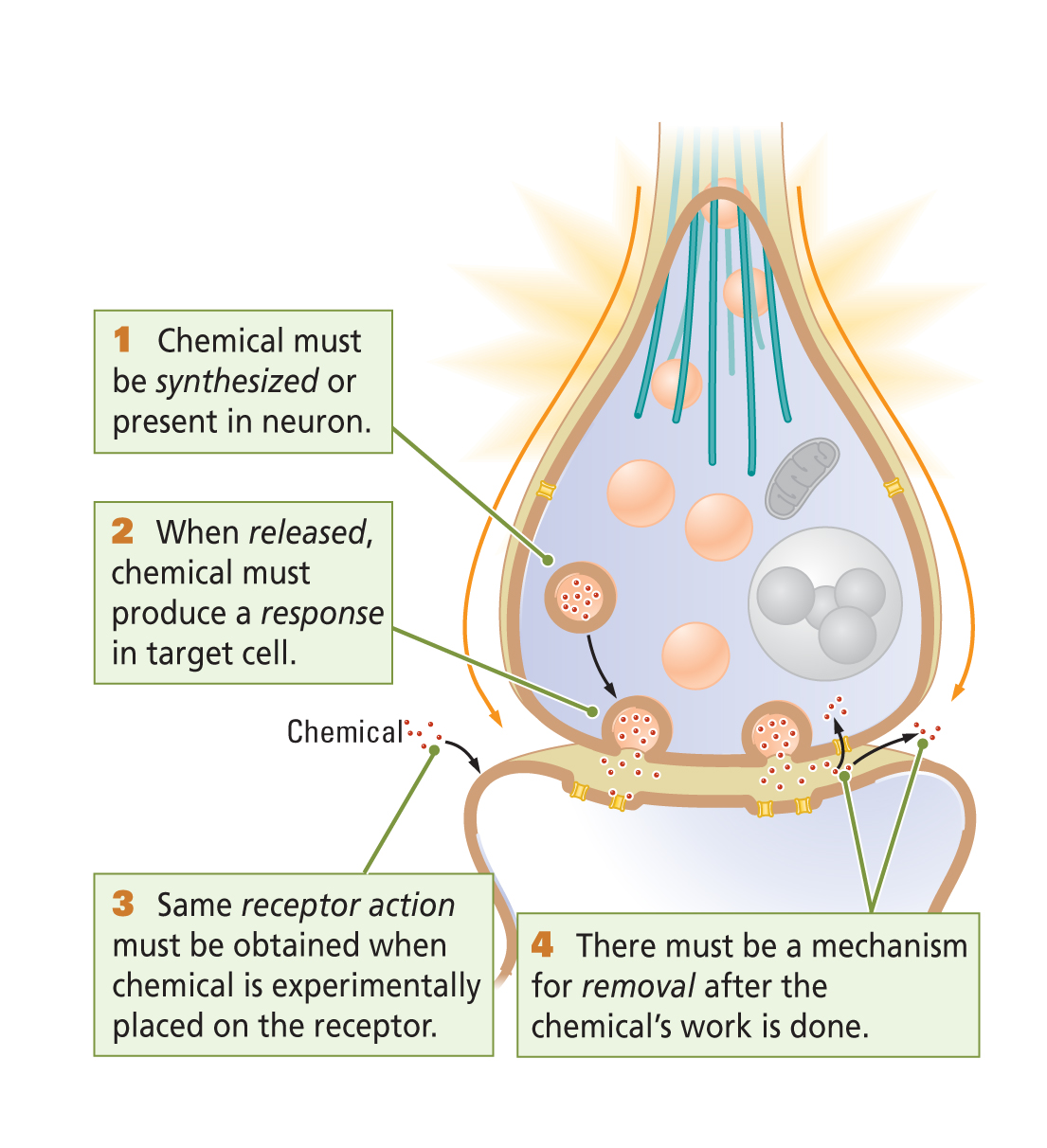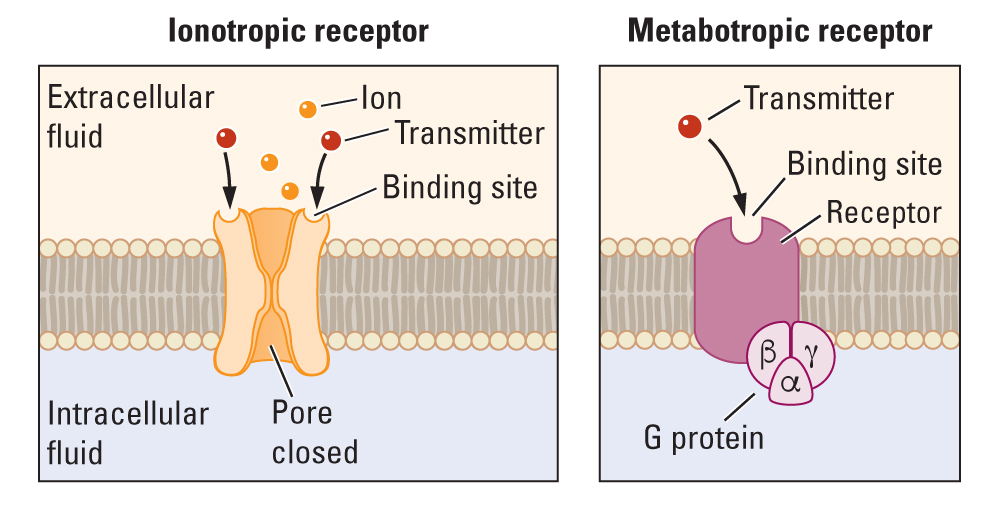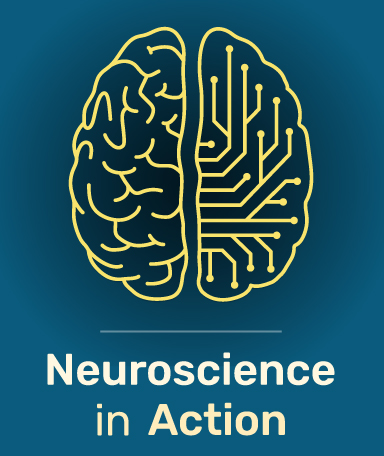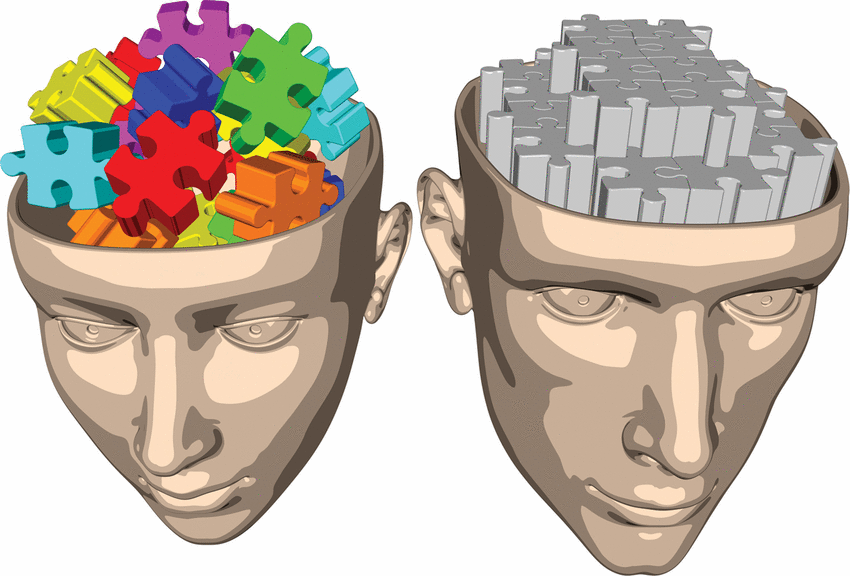Chapter 1. Getting to Know Your Neurotransmitters
Getting to Know Your Neurotransmitters
By:
In this activity you will learn about the major classes of neurotransmitters and their receptors.
After completing this activity you should be able to:
- List the criteria for identifying a substance as a neurotransmitter
- Identify and describe five classes of neurotransmitters
- Distinguish between ionotropic receptors and metabotropic receptors
This activity relates to the following principles of nervous system function:
- Principle 4: The CNS Functions on Multiple Levels
- Principle 10: The Nervous System Works by Juxtaposing Excitation and Inhibition
Neurotransmitters are chemicals that act at neuron synapses to produce either an excitatory or inhibitory effect when released by the neuron. However, not all chemicals that act at the synapse are considered neurotransmitters. Let’s look at how two different chemicals—dopamine, a neurotransmitter, and cocaine, a dopaminergic agonist—act at the synapse. Pay attention to the differences between them.
Watch the videos below to see the process of neurotransmission in action, first with dopamine and then cocaine.
Dopamine
Cocaine
Both dopamine and cocaine affect the process of neurotransmission, but dopamine is considered a neurotransmitter, while cocaine is not. What determines whether something is considered a neurotransmitter? There are four criteria.
A molecule is evaluated against a set of standard criteria before it is classified as a neurotransmitter. Let’s learn about each of these four criteria.
Criterion 1: The transmitter must be synthesized or present in the neuron.
Criterion 2: When released, the transmitter must produce a response in the target cell.
Criterion 3: The same receptor action must be obtained when the transmitter is experimentally placed on the receptor.
Criterion 4: There must be a mechanism for removal after the transmitter’s work is done. This animation shows one mechanism: reuptake.
Multiple techniques are used to identify neurotransmitters: researchers might stain cells to determine which chemicals are present in the neuron, stimulate single neurons to determine what chemicals are released upon stimulation, or record from single neurons to determine the effects on the postsynaptic neuron when a chemical is added to the synaptic cleft. If a chemical has not yet been shown to meet the criteria of the neurotransmitters, it is known as a putative (or supposed) transmitter.

There are five classes of neurotransmitters. Let’s explore each of them.
Small-molecule transmitters (Example: dopamine)
- Quick acting
- Synthesized from dietary nutrients, such as the foods we eat, and often reach the brain via the digestive system
- Packaged in vesicles in the presynaptic membrane and ready for release
- Quickly replaced
- Other examples: acetylcholine and serotonin

Peptide transmitters (Example: oxytocin)
- Slow acting
- Synthesized slowly, using transcription and translation pathways
- Not replaced quickly
- Can act as hormones
- Do not have direct effects on postsynaptic membrane voltage but can have indirect effects on cell structure and function
- Other examples: met-enkephalin, insulin, and gastrin

Lipid transmitters (Example: anandamide)
- Synthesized on demand but are not stored
- Act as retrograde transmitters (they are synthesized and released from the postsynaptic cell and act on receptor sites on the presynaptic membrane, opposite from actions of other neurotransmitters)
- Other example: 2-AG (2-arachidonoylglycerol)

Gaseous transmitters (Example: nitric oxide (NO))
- Do not act on receptor sites
- Easily cross cell membrane
- Synthesized on demand but are not stored
- Serve as chemical messengers in many parts of the body
- Other examples: carbon monoxide (CO) and hydrogen sulfide (H2S)

Ion (Example: zinc [Zn2+])
- Packaged and stored in vesicles, often with another neurotransmitter, most typically glutamate
- Can interact with several receptors
Let's review the properties of the different classes of neurotransmitters. Classify the mystery substances described below.
Question
- This chemical is synthesized from L-tryptophan, which is readily available in pork, turkey, milk, and bananas.
- This chemical acts quickly.
- This chemical is stored in vesicles.
- This chemical can be quickly replaced once it has been used.

Neurotransmitters can interact with two different types of receptors: Ionotropic receptors and metabotropic receptors.

Question 1.
NSjJUCf1dzW+OIfBllvg0hNXR8Zht8r71a4Hc+ULwprd/bTZM7KyvjkSxTNu7/8imPh4r/2zT5qgN4XTmomq4QRVqB/I0gv69WiN1x2d1t0+qnjoxmM3bHCR3asBAulf/ANq8LxZ//2TKhNOl4KCbqb5teQwftC9bz0ZQvHUKmz7n9+nvzLI1lvJ+JRq52h92hAI5wwjlDV4SrXzJI4I/8Z+ms3qzGazhVntgeahXLCrpuaSi0LtoSmg0b+lApDCQ70hqr6xs0vkJvY+2p361J62U8M=- Both have binding sites for the neurotransmitter.
- Both are embedded in the cell membrane of the postsynaptic cell.
- Ionotropic receptors have a membrane-spanning pore, while metabotropic receptors do not.
- Metabotropic receptors are attached to a G-protein complex, while ionotropic receptors are not.
Now that you have seen the visible differences between the two receptor types, let’s examine the functional differences.
Your answer has been provisionally accepted. You'll get full credit for now, but your instructor may update your grade later after evaluating it.
Ionotropic receptors allow ions, such as Na+, K+, Ca2+, and Cl- to move across a membrane. An ionotropic receptor has two parts: (1) a binding site for the neurotransmitter and (2) a pore, or channel.
Watch the animation to see how the ionotropic receptors function.
A metabotropic receptor has a binding site for a neurotransmitter, but it lacks its own pore through which ions could flow. One of the most common forms of metabotropic receptor is the G-protein coupled receptor (GPCR), in which each receptor is coupled to a G protein. When a neurotransmitter binds to the metabotropic receptor, the alpha subunit of the G protein detaches and can cause several reactions.
Watch the animations to see how the metabotropic receptor function. The first animation shows a metabotropic receptor coupled to an ion channel. The second animation depicts a metabotropic receptor coupled to an enzyme.
Ion channel
Enzyme

Question 2.
tSQtOVMmmBxjdzzVrlOGITLmN99VRpmCkCAVL2l5hMu0VbTIooU34S0JNleH6IJK+hMQGLlXv8aPr6S0SWKIe45DfxIQXabEV6iF8ZiF+bmEJEBEyuD88CWh167gfp+cB3Pp7no+NCLJKxtmMuXvd3+qoAsZL1wAaxakXSsVXTk8HNwEgrOgwt2e6PTvoxC1TI0DhzM20QsCQ5dFN0Tl3GtApW6LsCQ/vgXqHscQP5TIXXK2Bwnr4G7+wBhGhdGat2A5hyBkQiUf+QmzF1Ed5hmYJv5pDbPZYXAaGcWm7JQuqZ37vLAGPOweqhva6LE8+SCvpRiU+0nBTO2IZU/rUhIKQeF1tvS17H4uphUBKUBL4J1SlGTVR8o3JyxWH+OfU3W7J0prahHnPBToZw6HKUi06+c=- When the ionotropic receptor is activated, there are fast, direct effects on the postsynaptic cell.
- When the metabotropic receptor is activated, there are many possible effects on the postsynaptic cell, and the effects are slow, indirect, and potentially long-lasting.
Your answer has been provisionally accepted. You'll get full credit for now, but your instructor may update your grade later after evaluating it.
Each neurotransmitter may be able to interact with a number of different receptor subtypes. For example, acetylcholine (ACh) can interact with a nicotinic receptor (an ionotropic receptor) or with a muscarinic receptor (a metabotropic receptor). In fact, ACh can interact with 12 different metabotropic receptors. Each receptor subtype has slightly different properties (for example, how long a channel remains open or closed) and has different distributions throughout the nervous system and the body. This variety of receptor subtypes allows for a wide range of possible activity in the nervous system.

Congratulations! You have successfully completed the activity. In this activity, you learned the four criteria of neurotransmitters, examined the five different classes of neurotransmitters, and compared and contrasted ionotropic and metabotropic receptors.
Your instructor may now have you take a short quiz about this activity. Good luck!


